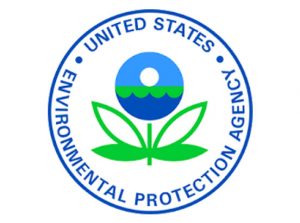EPA Publishes Final Risk Assesment for Paint Removal Chemical

In late March of this year, the EPA released the final risk assessment for N-Methylpyrrolidone (NMP), a chemical commonly used to remove paint and other coatings. It was thought NMP would be a safer alternative to methylene chloride, a chlorinated solvent, used in paint and coating removers. In the report, the EPA found that while gloves and respirators can help, they do not adequately reduce risks to women of childbearing age who use NMP for more than four hours per day on a single day or repeatedly over a succession of days.
“By completing this assessment, we have taken an important step in protecting pregnant women and women of childbearing age who are using NMP to remove paint,” said Jim Jones, Assistant Administrator for EPA’s Office of Chemical Safety and Pollution Prevention. “It is a reminder that as we evaluate these risks, it is very clear that our nation’s chemical laws are in much need of reform.”
The NMP final risk assessment was developed as part of the Agency’s Toxic Substances Control Act (TSCA) Work Plan, which identified chemicals for review and assessment of potential risks to people’s health and the environment. For both NMP and methylene chloride, EPA is considering a range of voluntary and regulatory actions to reduce risks, and recommends finding safer paint/coating removal chemicals, or taking precautions that can reduce exposures, such as using the product outside, in a well-ventilated area, and wearing proper gloves and respiratory protection.
More information on the NMP Final Risk Assessment can be found on the agency’s Assessments for TSCA Work Plan Chemical page.
‘Out of sight, out of mind’ was the motto for waste management in the U.S. for a very long time and, as it applied to hazardous waste management, the further out of sight the better. Unlined, unmonitored landfills were the standard too; at least until they started catching fire and seeping toxins.
Enter the 1970’s, the birth of the EPA and the beginning of regulated hazardous waste management as we know it today. Initially certain chemicals were banned from the landfill leading to the creation of hazardous waste incinerators and new treatment standard regulations. Construction of landfills themselves vastly improved with linings, close monitoring and strict site requirements including water table, environmental, and population issues taken into consideration and regulated.
Today, federal, state, and local regulations continue to be updated and added as new information is uncovered. Exciting new advances in technology and science are creating more sustainable solutions every day. Landfill use is being reduced significantly with non-hazardous waste-to-energy programs that use BTU value in waste as fuel to generate electricity. Fuel blenders mix hazardous and non-hazardous waste to create fuel that fires cement kilns. Solvent distillation reduces resource demands upfront, producing a sellable product with little or no environmental exposure.
- Waste reduction at the source
- Waste repurposing
- Waste recycling/reuse
- Physical, chemical and biological treatment
- Incineration
- Landfilling
The spotlight is on corporations to create demonstrable sustainability programs, and the largest of them are leading the way, adding annual Sustainability Reports in addition to annual financial reports. If you believe your waste is being buried or burned without sustainable options having been explored, consider this as well: modern sustainable hazardous waste management solutions often save companies money while also helping reduce risk and liability.